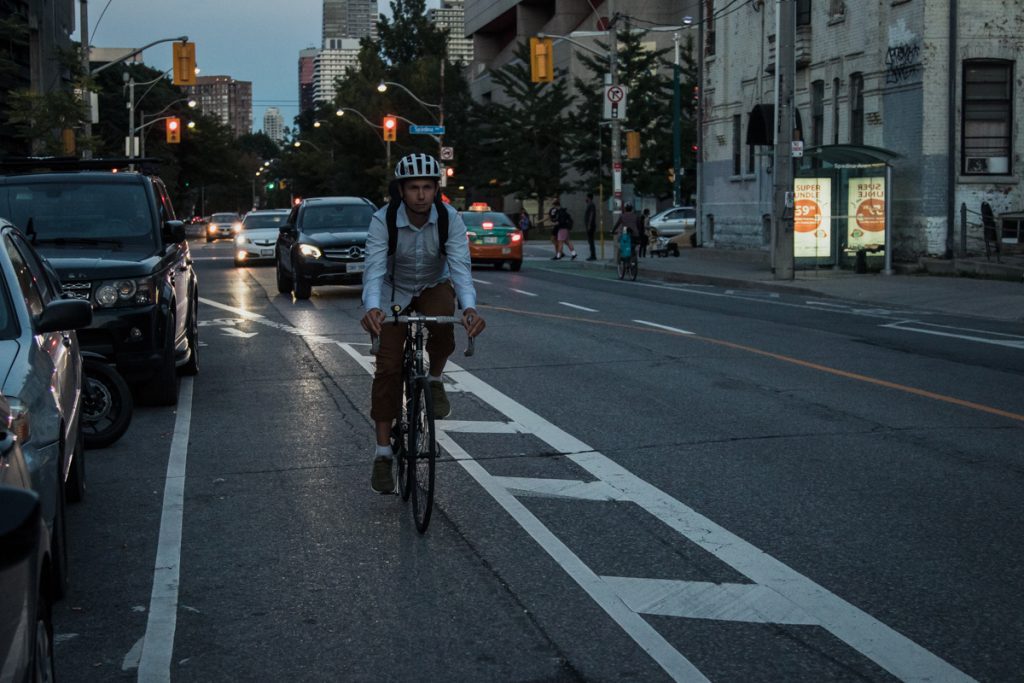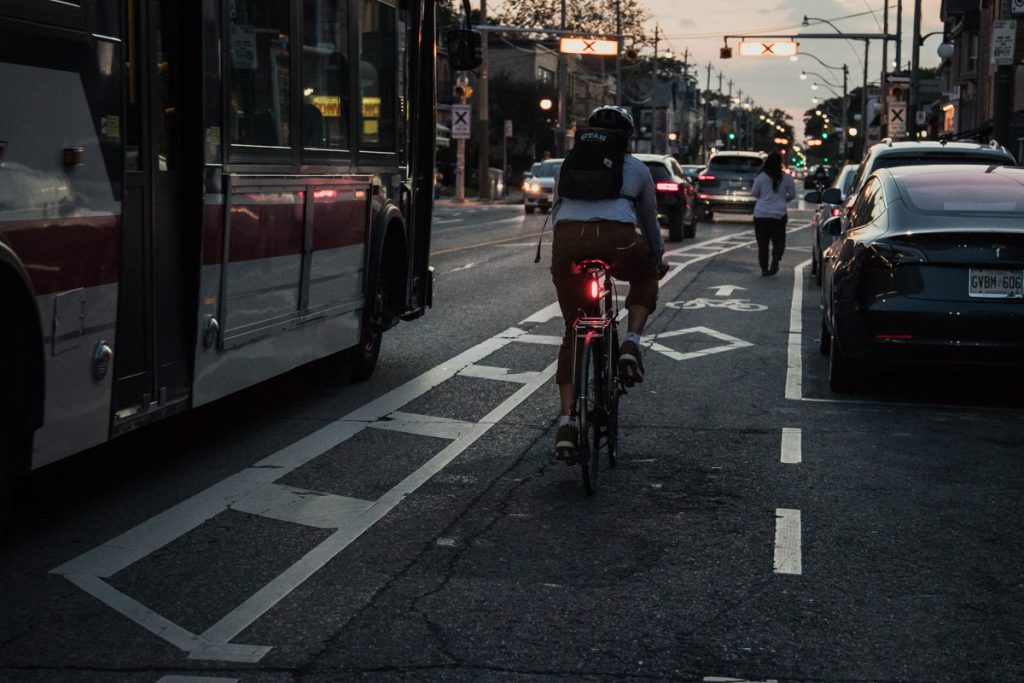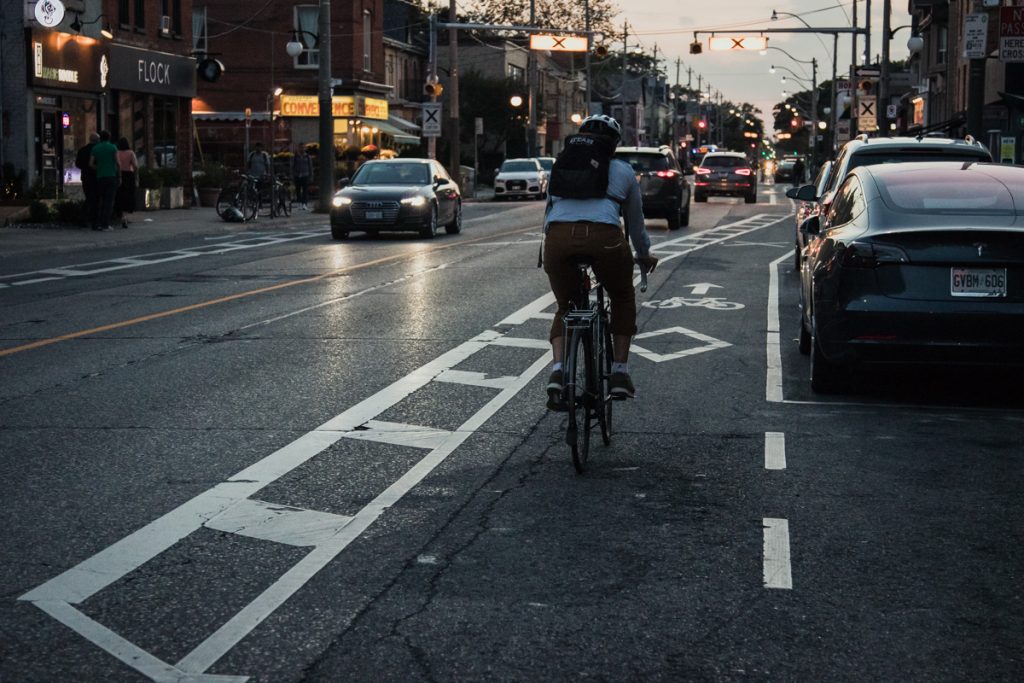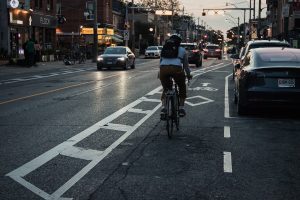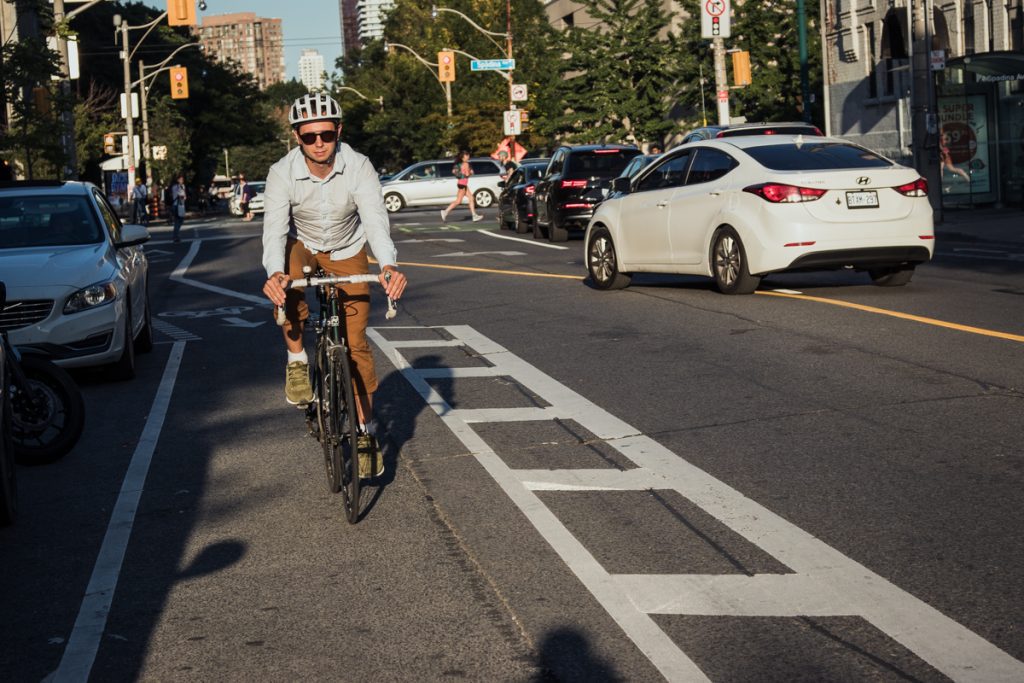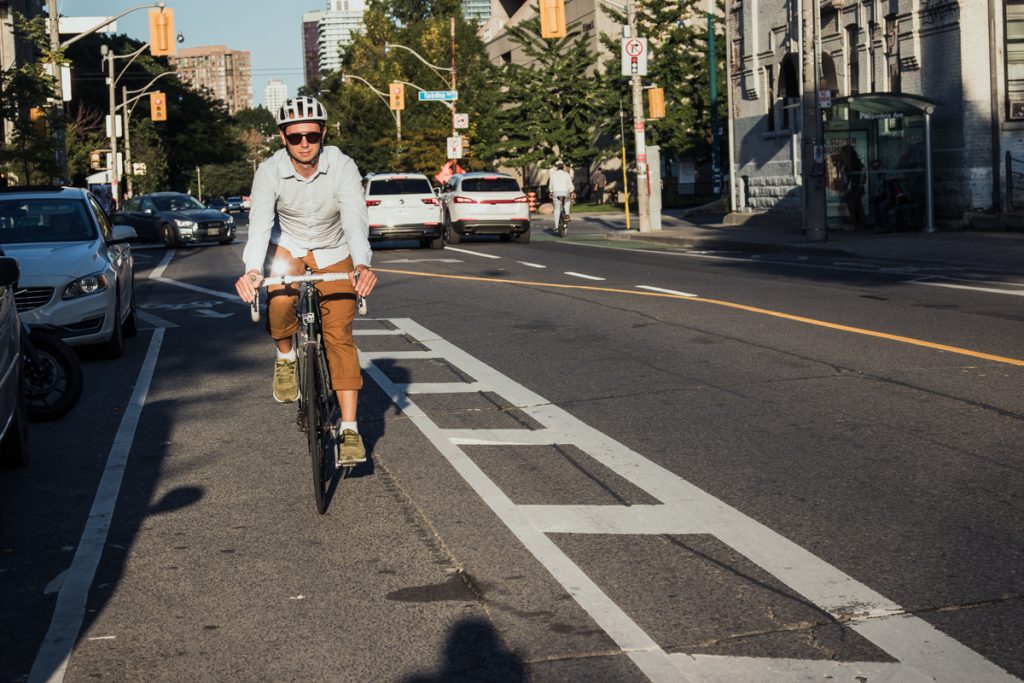When I roll out of the office in the evenings at this time of year, the gloominess and fading light make me less visible to drivers. Many evenings, I risk riding without lights on my commute home. On a busy street when I veer into the lane to make a left hand turn, I often wonder how visible I am to the drivers coming up behind me. As I make my lane change, I hope motorists see me. If they don’t, I’m making myself very vulnerable. Lights can completely change that scenario.
In the coming weeks, the daylight will fade earlier and earlier. If you will be riding your bike this fall, having a good set of bike lights will be very important. To illustrate this importance, we headed out in the daylight and at dusk with Kryptonite’s Alley F-800 and Avenue R-75 COB to see the difference riding with a bright light makes to your visibility on the road.
People who work a typical nine-to-five workday will especially be affected by the fading light. Commutes home from work after the end of daylight savings on Nov. 4 will be in quickly fading light and even complete darkness. Autumn also ushers in gloomy conditions with increased precipitation, which, combined with low light, can make cyclists difficult to see on the road.
These conditions can be especially dangerous for cyclists on streets full of impatient commuters driving home. So to be on the cautious side, use lights regardless of the conditions you are riding in. They can make a huge difference.
So what should you look for in a new light to keep you visible in changing light conditions? Here are a couple of things to keep in mind.
1) Lumens
The number of lumens the light emits is important. More lumens mean a brighter light, which is especially beneficial on roads with higher speed limits where a strong light will be visible at a greater distance than a weaker light. The Alley F-800 emits a whopping 800 lumens at its maximum setting but can also emit 400 or 140 lumens at its lower settings. This range will make you more visible to motorists in different conditions.
2) Light modes
Apart from the brightness of the light, the modes available to you can help you be appropriately visible. Kryptonite’s lights have a lot of modes to choose from, including specific day and night pulses. If you are riding on a very dark road or trail, select the brightest mode with a solid beam at 800 lumens so you can see ahead and be seen at a distance. If your commute is on well-lit city streets, visibility is key. Select a flash mode: a non-constant light will attract much more attention and announce your presence to cars and trucks.
3) Battery life
Depending on the length of your ride home and how diligent you are recharging your lights, choose a model accordingly. Knowing your lights last long enough will give you the confidence to turn them on even if it’s not pitch black out yet. Kryptonite’s lights can last as long as 24 hours on the economic flash mode to just 1.5 hours on high power. In the Kryptonite line—when a light reaches 10 per cent battery or less, it automatically switches to its lowest lumen output—allowing you to get home safe. Rechargeable lights via a USB are very practical with no batteries to remove or replace.
4) Range of visibility
Lights are generally separated into two categories: to see and to be seen. Rear lights are always used to be seen. A higher lumen, indicates a brighter light making you more visible from behind. With front lights the style in part dictates function. A COB or small blinky front light would be more of a to be seen light, and a torch or flashlight style light with lots of lumens is more geared towards enabling the rider to see. Few lights offer full, 360-degree visibility but a wide range will help drivers see you from more angles. Some lights, like Kryptonite’s, achieve this range by using slits on the side of the main front-facing light to ensure that the light is still visible from the side.
5) Ease of installation
A light that is complicated to install is one you will be less likely to use, especially when there’s still some light in the sky. With an easy system for installation, you can remove the light to recharge and move it from bike to bike without any hassle.
Even though you can see your surroundings clearly at dusk and you may feel you are visible to drivers, a cyclist can be tough to see in changing light conditions. The sun is lower in the sky making glare and shadows more pronounced, especially through a car window. Choose the right light and make sure you are consistently using it to stay safe on the roads.
